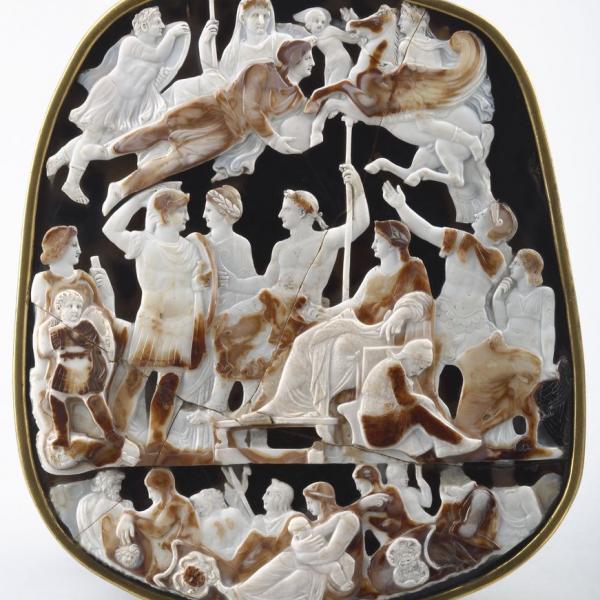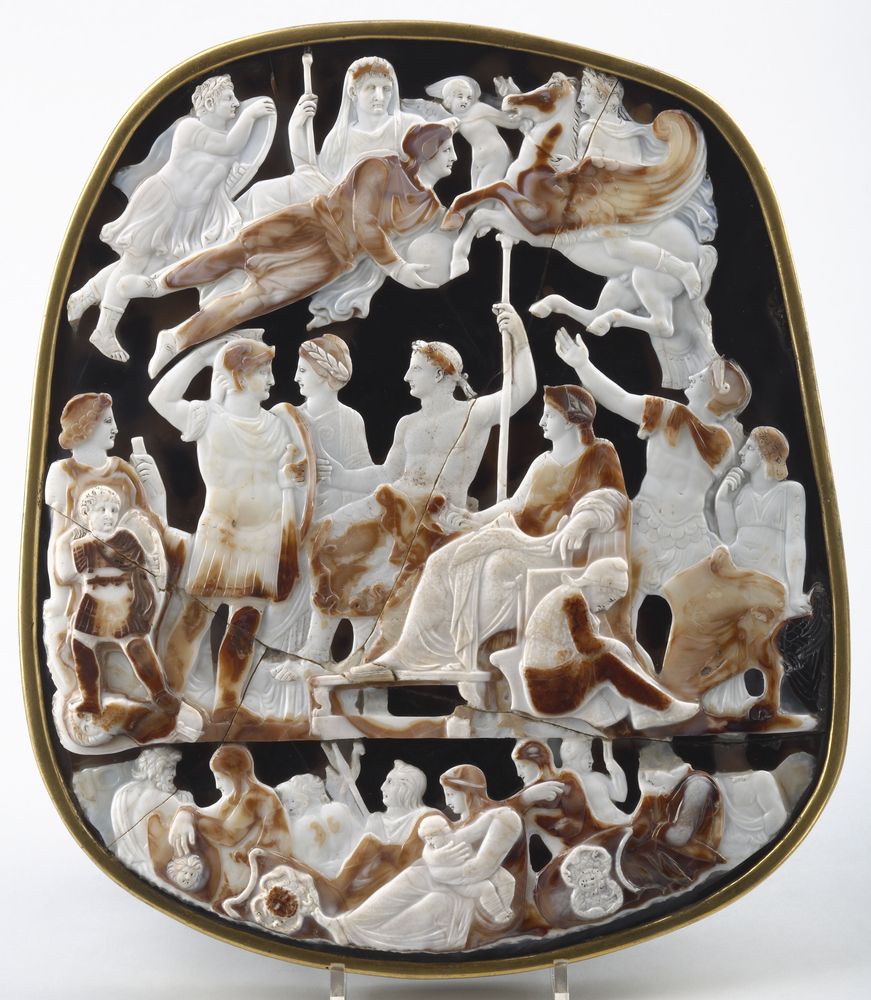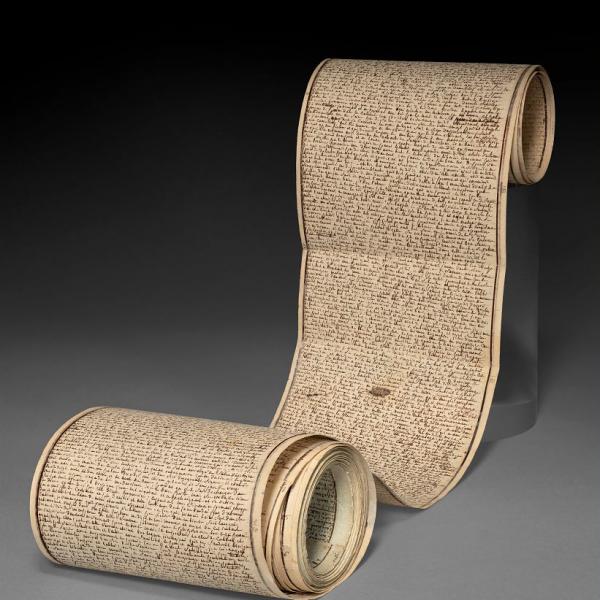The BnF Museum collections
Some of the collections’ treasures
“Revolutions”: The BnF museum’s new annual theme
The BnF Museum puts on a new face every year so that all the treasures in the Library’s collections can be displayed to visitors. For its second year of activity, it has mounted a presentation focusing on the theme of revolutions, awaiting your discovery from 16 September 2023 to 8 September 2024. Although it is mainly housed in the Mazarin Gallery, a good many items from the Library’s collections also echo the “revolutions” theme in the Museum’s other rooms.
A history of our civilisational changes
The collections’ new presentation is organised around the theme of revolution, amplified by the diversity of fields covered in the Library. Taking in scientific, technological, aesthetic and political revolutions, the new itinerary invites visitors to acquaint themselves with famous and little-known works and documents, and by doing so, gain greater understanding of the history of our civilisational changes from a unique perspective. They can spend time contemplating series of items that bring together manuscripts, drawings, maps, precious objects, photographs and costumes which tell the stories of some of the turning points in a western period made up of disruptions, accelerations and rebounds. In chronological order, from the 14th century to the 2000s, astronomers, philosophers, artists, cartographers, photographers, writers and composers reveal and leave us to meditate on the traces and images of these upheavals, often brought about by their encounters with foreign lands, their confrontations with other civilisations. The BnF’s treasures provide us with an undoubtedly simplified overview of this complex dynamic, which stratifies different timelines that depend on the fields involved, but which the selected works and documents recreate with a power all their own.
From Victor Hugo to Édouard Glissant
Hence two aspects of the French Revolution are depicted: women’s struggle for recognition of their rights and the unique, provocative figure of the Marquis de Sade, whose manuscript of the 120 Days of Sodom, written while he was imprisoned in the Bastille, is on display to the public for the first time since the BnF acquired it in 2021. A daughter of the Revolution, the revolution of ideas and values promoted by the romantics is illustrated by juxtapositions of works by Victor Hugo, Goethe, Delacroix and Beethoven. The social effects of the 19th century’s industrial and capitalist revolution can be read in Émile Zola’s manuscripts. And finally, some of the 20th century’s many revolutions are exhibited in the Gallery’s last display cases, from futurists’ and surrealists’ works/manifestos to the student and worker revolts of May 1968, Niki de Saint Phalle’s feminist art, and works of liberation by writers upholding black and Creole causes, such as Léopold Sédar Senghor, Aimé Césaire and Édouard Glissant.
Each thematic display case, each and every treasure on exhibition is a window onto other works in our collections, works that cannot but extend their meanings. Their alignment in the itinerary created for the three rotations set to succeed each other over the course of the year is above all an invitation to curiosity and the joys of discovery, to continue exploration of the Library’s physical and digital areas.
Download the Press Release « Musée de la BnF. Thème pour la saison 2023 - 2024 :“Les révolutions” »
Practical information
Opening times
Tuesday (late-night opening): 10 a.m. – 8 p.m.
Wednesday to Sunday: 10 a.m. – 6 p.m.
Closed on Mondays and select bank holidays*
The Museum is open on 8 May, Ascension Thursday, and 1 and 11 November.
* The Museum is closed on 1 January, Easter Monday, 1 May, Whit Monday, 14 July, 15 August and 25 December
Please note: due to the fragility of certain artworks, some pieces on display in the Mazarin Gallery and Rotunda are rotated every four months, showcasing the breadth of the BnF’s collections. These spaces are closed to the public while the pieces are rotated.
Mazarin Gallery closing dates: From Monday 1 to Friday 12 september 2025 included and from Monday 12 to Thursday 22 january 2026 included
Rotunda closing dates: From Monday 6 to Friday 12 October 2025 included and from Monday 23 March to Friday 3 April 2026 included
Access
Site Richelieu
5, rue Vivienne
75002 PARIS
Group activities
Reservation obligatory at visites@bnf.fr or on 01 53 79 49 49 (from Monday to Saturday, 9 am to 5 pm)
Rates
During the Mazarin Gallery’s closure period, individual tickets are only available at ticket offices and Museum admission rates are lowered to 7 € (full rate), 5 € (reduced rate), 10 € (full rate coupled with an exhibition) and 7 € (reduced rate coupled with an exhibition).
Guided tours of the BnF’s Museum – Reservation












